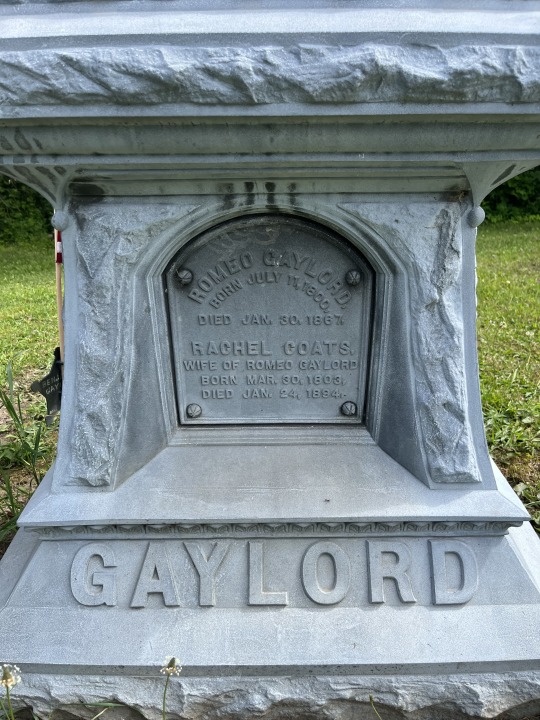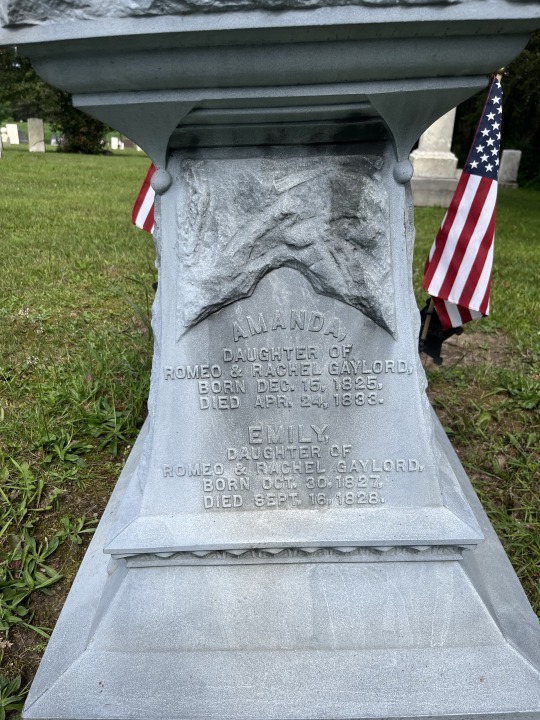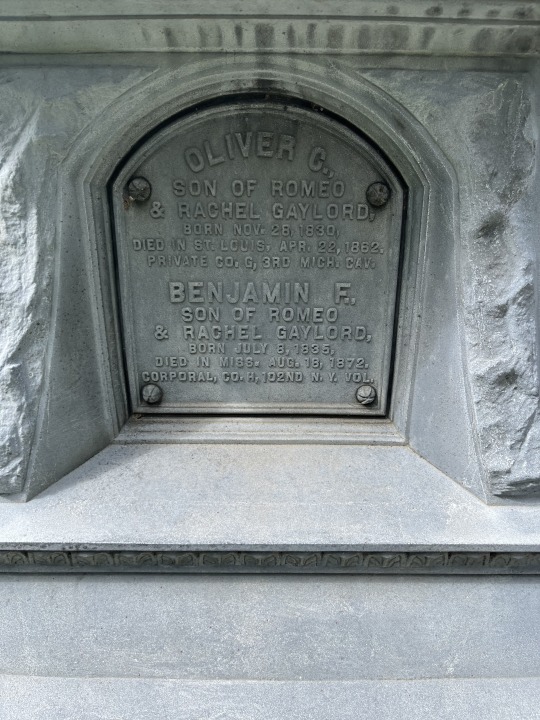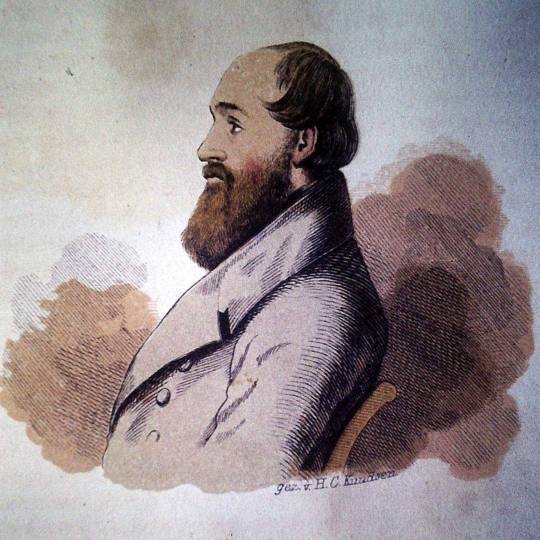#31 October 1864
Text
Some primary sources
I plan to add more whenever I find more.
Historie Parlamentaire de la Révolution Française ou Journal des Assemblées Nationales, depuis 1789 jusqu’en 1815
Volume 1 (May 1789)
Volume 2 (June-September 1789)
Volume 3 (September-December 1789)
Volume 4 (December 1789-March 1790)
Volume 5 (March-May 1790)
Volume 6 (May-August 1790)
Volume 7?
Volume 8 (November 1790-February 1791)
Volume 9 (February-May 1791)
Volume 10 (May-July 1791)
Volume 11 (July-September 1791)
Volume 12 (September-December 1791)
Volume 13 (January-March 1792)
Volume 14 (April-June 1792)
Volume 15 (June-July 1792)
Volume 16 (July-August 1792)
Volume 17 (August-September 1792)
Volume 18 (September 1792)
Volume 19 (September-October 1792)
Volume 20 (October-November 1792)
Volume 21 (November-December 1792)
Volume 22 (December 1792-January 1793)
Volume 23 (January 1793)
Volume 24 (February-March 1793)
Volume 25 (March-April 1793)
Volume 26 (April-May 1793)
Volume 27 (May 1793)
Volume 28 (July-August 1793)
Volume 29 (September-October 1793)
Volume 30 (October-December 1793)
Volume 31 (November 1793-March 1794)
Volume 32 (March-May 1794)
Volume 33 (May-July 1794)
Volume 34 (July-August 1794)
Recueil des actes du comité de salut public
Volume 1 (August 12 1792-January 21 1793)
Volume 2 (January 22-March 31 1793)
Volume 3 (April 1-May 5 1793)
Volume 4 (6 May-18 June 1793)
Volume 5 (19 June-15 August 1793)
Volume 6 (15 August-21 September 1793)
Volume 7 (22 September-24 October 1793)
Volume 8 (25 October-26 November 1793)
Volume 9 (27 November-31 December 1793)
Volume 10 (1 January-8 February 1794)
Volume 11 (9 February-15 March 1794)
Volume 12 (16 March-22 April 1794)
Volume 13 (23 April-28 May 1794)
Volume 14 (29 May-7 July 1794)
Volume 15 (8 July-9 August 1794)
Recueil de documents pour l’histoire du club des Jacobins de Paris
Volume 1 (1789-1790)
Volume 2 (January-July 1791)
Volume 3 (July 1791-June 1792)
Volume 4 (June 1792-January 1793)
Volume 5 (January 1793-March 1794)
Volume 6 (March-November 1794)
Histoire du tribunal révolutionnaire de Paris: avec le journal de ses actes.
Volume 1
Volume 2
Volume 3
Volume 4
Volume 5
Papiers inédits trouvés chez Robespierre, Saint-Just, Payan etc
Volume 1
Volume 2
Volume 3
Oeuvres complètes de Robespierre
Volume 1 (Robespierre à Arras)
Volume 2 (Les œuvres judiciaires)
Volume 3 is the correspondence, listed below
Volume 4 (Le defenseur de la Constitution)
Volume 5 (lettres à ses comettras)
Volume 6 (speeches 1789-1790)
Volume 7 (speeches January-September 1791)
Volume 8 (speeches October 1791-September 1792)
Volume 9 (speeches September 1792-June 27 1793)
Volume 10 (speeches June 27 1793-July 27 1794)
Oeuvres de Maximilien Robespierre (not the same as Oeuvres completés)
Volume 1
Volume 2
Volume 3
Oeuvres de Jerome Pétion
Volume 1
Volume 2
Volume 3
Volume 4
Oeuvres complètes de Saint-Just
Volume 1
Volume 2
Oeuvres littéraires de Hérault de Séchelles (1907)
Oeuvres de Danton (1866)
Discours de Danton (1910) by André Fribourg
Works by Desmoulins
La France Libre (1789)
Discours de la Lanterne aux Parisiens (1789)
Révolutions de France et de Brabant (1789-1791)
Volume 1 (number 1-13)
Volume 2 (number 14-26)
Volume 3 (number 27-39)
Volume 4 (number 40-52)
Volume 5 (number 53-65)
Volume 6 (number 66-79)
Volume 7 (number 80-86)
La Tribune des Patriots (1792) (all numbers)
Le Vieux Cordelier (1793-1794) (all numbers)
Jean Pierre Brissot démasqué (1792)
Histoire des Brissotins (1793)
Correspondences
Correspondance de Maximilien et Augustin Robespierre (1926)
Correspondance de George Couthon (1872)
Correspondance inédit de Camille Desmoulins (1836)
Correspondance inédite de Marie-Antoinette (1864)
Billuad-Varennes — mémoires et correspondance
Correspondance de Brissot
Lettres de Louis XVI: correspondance inédite, discours, maximes, pensées, observations etc (1862)
Lettres de Madame Roland (1900)
Volume 1
Volume 2
Correspondance inédite de Mlle Théophile Fernig (1873)
Journal d’une bourgeoise pendant la Révolution 1791-1793 by Rosalie Jullien (1881)
Memoirs
Memoirs of Bertrand Barère
Volume 1
Volume 2
Volume 3
Volume 4
Memoirs of Élisabeth Lebas
In French
In English
Mémoires de Charlotte Robespierre sur ses deux frères (1835)
In French
In English
Memoirs of Joseph Fouché
Volume 1 (English)
Volume 2 (French)
Mémoires de Brissot (1877)
Mémoires inédits de Pétion et mémoires de Buzot et Barbaroux (1866)
Memoirs of Barras — member of the Directorate (1899)
Mémoires inédits de madame la comtesse de Genlis depuis 1756 jusqu’au nos jours
Volume 1
Volume 2
Volume 3
Volume 4
Volume 5
Volume 6
Volume 7
Volume 8
Volume 9
Volume 10
Mémoires de Madame Roland
Volume 1
Volume 2
Mémoires de Louvet (1862)
Memoirs of the Duchess de Tourzel: Governess to the Children of France During the Years 1789, 1790, 1791, 1792, 1793 and 1795
Volume 1
Volume 2
Révélations puisées dans les cartons des comités de salut public et de sûreté générale, ou Mémoires (inédits) de Sénart, agent du gouvernement révolutionnaire (1824)
Free books
Danton (1978) by Norman Hampson (borrowable for an hour, renewable every hour)
Robespierre (2014) by Hervé Leuwers (borrowable for an hour, renewable every hour)
Collot d’Herbois — légendes noires et Révolution (1995) by Michel Biard
Choosing Terror (2014) by Marisa Linton
The Coming of the Terror in the French Revolution (2015) by Timothy Tackett
Augustin: the younger Robespierre by (2011) by Mary-Young
Journaliste, sans-culotte et thermidorien: le fils de Fréron, 1754-1802, d’après des documents inédits (1909) by Raoul Arnaud
Un Champion de la Royauté au début de la Révolution - François Louis Suleau (1907)
Part 1
Part 2
Part 3
Part 4
Camille Desmoulins and his wife — passages from the history of the dantonists (1876) by Jules Claretie
Vadier, président du Comité de sûreté générale sous la Terreur d’après des documents inédits (1896) by Albert Tournier
Mémoires historiques et militaires sur Carnot (1824)
Le Puy-de-Dôme en 1793 et le Proconsulat de Couthon (1877) by Francisque Mège
Le procès des Dantonistes, d'après les documents, précédé d'une introduction historique. Recherches pour servir à l'histoire de la révolution française (1879) edited by Dr. Jean François Eugène Robinet
Robert Lindet, député à l'Assemblée législative et à la Convention, membre du Comité de salut public, ministre des finances : notice biographique (1899) by Amand Montier
Prieur de la Côte-d'Or (1900) by Paul Gaffarel
Un épicurien sous la Terreur; Hérault de Séchelles (1759-1794); d'après des documents inédits (1907) by Emile Dard
Twelve Who Ruled (1941) by R. R. Palmer (borrowable for an hour, renewable every hour)
Bertrand Barère: A Reluctant Terrorist (1963) by Leo Gershoy (borrowable for an hour, renewable every hour)
Saint-Just : sa politique et ses missions (1976) by Jean-Pierre Gross (borrowable for an hour, renewable every hour)
The Glided Youth of Thermidor (1993) by François Gendron
Pauline Léon, une républicaine révolutionnaire by Claude Guillon
Billaud-Varenne: Géant de la Révolution (1989) by Arthur Conte
When the King Took Flight (2003) by Timothy Tackett (borrowable for an hour, renewable every hour)
Joseph Le Bon, 1765-1795; la terreur à la frontière (1932) by Louis Jacob
Volume 1
Volume 2
Resources shared by other tumblr users (thank you all very much!!!)
Resources shared by @iadorepigeons
Resources shared by @georgesdamnton
Resources shared by @rbzpr:
Fabre d’Eglantine resources shared by @edgysaintjust
Saint-Just resources shared by @sieclesetcieux
Saint-Just resources shared by @orpheusmori
Marat resources shared by @orpheusmori
My own translations
Lucile Desmoulins’ diary (1788, 1789, 1790, 1792-1793)
Charlotte Robespierre et ses amis (1961)
Laponneraye on the life of Charlotte Robespierre (1835)
Abbé Proyart on the childhood of Robespierre (1795)
Regulations for the internal exercises of the College of Louis-le-Grand (1769)
Regulations for law students at Louis-le-Grand (1782)
Belongings left by Danton, Fabre and Desmoulins after their arrest
Letters from Robespierre’s father
Robespierre family timeline
#frev resources#frev#french revolution#maximilen robespierre#augustin robespierre#robespierre#george couthon#couthon#camille desmoulins#desmoulins#joseph fouché#fouché#charlotte robespierre#elisabeth lebas#elisabeth duplay#billaud-varennes#jerome Pétion#jacques-pierre brissot#saint-just
450 notes
·
View notes
Text
Charles Haddon Spurgeon

Charles Haddon Spurgeon (1834-1892) was called to pastor the New Park Street Chapel, London, when he was only nineteen. This church became the 6,000 seat Metropolitan Tabernacle, which he pastored until his death at age 58. Through his relatively short but phenomenally productive ministry, Spurgeon pastored, directed a Pastor’s College, oversaw a Bible and tract society, organized Stockwell Orphanage, published the monthly magazine Sword and Trowel, edited a weekly sermon (among the several he preached each week), and wrote a number of books, including his well-known Treasury of David.
Timeline of the Life of Charles Haddon Spurgeon (1834-1892)
1834 (June 19) – Born at Kelvedon, Essex.
1850 (January 6) – Converted at Colchester.
1850 (April 4)- Admitted to Church membership at Newmarket.
1850 (May 3) – Baptized in the River Lark at Isle-ham.
1851 – Becomes Pastor of Waterbeach Baptist Chapel.
1853 – First literary effort, No. I of Water-beach Tracts published.
1853 (December) – Preaches at New Park Street Chapel, London, for the first time.
1854 (April) – Accepts Pastorate of New Park Street Chapel.
1855 (January) – First sermon in the “New Park Street Pulpit” published.
1855 (February) – First preaches at Exeter Hall.
1855 (July) – Mr. T. W. Medhurst becomes C. H. Spurgeon’s first ministerial student.
1856 (January 8) – Marries Miss Susannah Thompson.
1856 (June) – Metropolitan Tabernacle Building Committee formed.
1856 (September 20)- Twin sons Thomas and Charles born.
1856 (October 19) – Surrey Gardens Music Hall Disaster.
1856 (November 23) – Services recommenced at the Music Hall.
1857 – A second student accepted by C. H. Spurgeon and the Pastor’s College practically founded.
1857 (October 7) – Preaches to 23,654 persons at the Crystal Palace on Fast Day.
1859 (August 16) – Foundation Stone of the Metropolitan Tabernacle laid.
1861 (March 18) – Metropolitan Tabernacle opened with a great prayer meeting.
1864 (June 5) – The famous “Baptismal Regeneration” sermon preached.
1866 – Metropolitan Tabernacle Colportage Association founded.
1867 (March 24-April 21) – Sunday services, each attended by 20,000 persons, held at the Agricultural Hall, Islington, during the renovation of the Metropolitan Tabernacle.
1867 – Stockwell Orphanage (Boys’ side) founded.
1873 (October 14) – Foundation Stone of the Pastors’ College Building laid.
1875 – Mrs. Spurgeon’s Book Fund inaugurated.
1879 – Girls’ Orphanage founded.
1884 (June 18 and 19) – Jubilee Celebrations and presentation of testimonial (£4,500).
1887 (August) – First “Down-grade” paper published in “The Sword and the Trowel.”
1887 (October) – Withdrawal from the Baptist Union.
1891 (June 7) – Last sermon at the Metropolitan Tabernacle.
1891 (October 26) – Goes to Mentone for the last time.
1892 (January 31) – Passes away.
1892 (February 11) – Interred at Norwood Cemetery.
8 notes
·
View notes
Text
Asteroid babbage(11341)🖥️

DISCLAIMER: THESE OBSERVATIONS ARE BASED ON MY PERSONAL OBSERVATIONS.
DO NOT PLAGIARISE 🚫 MY 🚫 WORK 🚫 IF YOU WISH TO REPOST IT GIVE ME THE CREDITS 💌🧿
NAMED AFTER: CHARLES BABBAGE
DATE OF BIRTH: 26 DECEMBER 1791
DATE OF DEATH: 18 OCTOBER 1871
AGE OF DEATH: 79
CAUSE OF DEATH: RENAL INADEQUACY, SECONDARY TO CYSTITIS
ABOUT CHARLES BABBAGE
Charles Babbage was an English polymath. A mathematician, philosopher, inventor and mechanical engineer, Babbage originated the concept of a digital programmable computer
BABBAGE'S ACHIEVEMENTS
Babbage is considered by some to be "father of the computer". Babbage is credited with inventing the first mechanical computer, the Difference Engine, that eventually led to more complex electronic designs, though all the essential ideas of modern computers are to be found in Babbage's Analytical Engine, programmed using a principle openly borrowed from the Jacquard loom.
Babbage had a broad range of interests in addition to his work on computers covered in his book Economy of Manufactures and Machinery. His varied work in other fields has led him to be described as "pre-eminent" among the many polymaths of his century.
Babbage, who died before the complete successful engineering of many of his designs, including his Difference Engine and Analytical Engine, remained a prominent figure in the ideating of computing.
Parts of Babbage's incomplete mechanisms are on display in the Science Museum in London. In 1991, a functioning difference engine was constructed from Babbage's original plans. Built to tolerances achievable in the 19th century, the success of the finished engine indicated that Babbage's machine would have worked
The idea of mechanically calculating mathematical tables first came to Babbage in 1812 or 1813. Later he made a small calculator that could perform certain mathematical computations to eight decimals. Then in 1823 he obtained government support for the design of a projected machine, the Difference Engine, with a 20-decimal capacity.
In 1843 Babbage’s friend mathematician Ada Lovelace translated a French paper about the Analytical Engine and, in her own annotations, published how it could perform a sequence of calculations, the first computer program. The Analytical Engine, however, was never completed.
Babbage’s design was forgotten until his unpublished notebooks were discovered in 1937. In 1991 British scientists built Difference Engine No. 2—accurate to 31 digits—to Babbage’s specifications, and in 2000 the printer for the Difference Engine was also built.
BABBAGE'S PUBLIC NUISANCES
Babbage involved himself in well-publicised but unpopular campaigns against public nuisances. He once counted all the broken panes of glass of a factory, publishing in 1857 a "Table of the Relative Frequency of the Causes of Breakage of Plate Glass Windows": Of 464 broken panes, 14 were caused by "drunken men, women or boys".
Babbage's distaste for commoners (the Mob) included writing "Observations of Street Nuisances" in 1864, as well as tallying up 165 "nuisances" over a period of 80 days. He especially hated street music, and in particular the music of organ grinders, against whom he railed in various venues.
The following quotation is typical:
It is difficult to estimate the misery inflicted upon thousands of persons, and the absolute pecuniary penalty imposed upon multitudes of intellectual workers by the loss of their time, destroyed by organ-grinders and other similar nuisances.
Babbage was not alone in his campaign. A convert to the cause was the MP Michael Thomas Bass.
In the 1860s, Babbage also took up the anti-hoop-rolling campaign. He blamed hoop-rolling boys for driving their iron hoops under horses' legs, with the result that the rider is thrown and very often the horse breaks a leg. Babbage achieved a certain notoriety in this matter, being denounced in debate in Commons in 1864 for "commencing a crusade against the popular game of tip-cat and the trundling of hoops."
Basically he became a ken(male of version of Karen) of 1864
MEMORIALS FOR BABBAGE
There is a black plaque commemorating the 40 years Babbage spent at 1 Dorset Street, London. 👇

Locations, institutions and other things named after Babbage include:
🥬The Moon crater Babbage
🥬The Charles Babbage Institute, an information technology archive and research center at the University of Minnesota
🥬The Charles Babbage Premium, an annual computing award
🥬British Rail named a locomotive after him in the 1990s
🥬The Babbage Building at the University of Plymouth, where the university's school of computing is based
🥬The Babbage programming language for GEC 4000 series minicomputers
🥬"Babbage", The Economist's Science and Technology blog.
🥬The former chain retail computer and video-games store "Babbage's" (now GameStop) was named after him.
WHAT I THINK THIS ASTEROID COULD MEAN
Where you create a legacy or become extremely reknowed/ prominent
(Charles was known for being father of computers)
Multiple interest/ versatility
Where you attain support from law or people around you
Where your work may be forgotten or unaknowledged for a while and then become prominent or extremely important.
Deep rooted interests and where we tend to focus to to improve
Where we set ourselves apart from the crowd/ where we become distinguished.
Where we encourage others to follow us or where others feel the need to follow us
Where we become notorius/controversial too sooooo 👀😂
Prominence of this asteroid occurs only when it is conjuncting with your personal points (ic, dc, mc, ac) and personal planets (sun, moon, mars, mercury, venus)
#astro community#astro notes#astrology#birth chart#horoscope#asteroids#asteroid#asteroid observations#asteroid observation#asteroids observations#asteroid babbage#babbage#asteroid 11341
89 notes
·
View notes
Text

—Marian Ramos-de León; born. October 31, 1864
#HAPPY BIRTHDAY TO MY SPOOKIEST OC#not rlly but yk#marian ramos de león#red dead redemption 2#rdr2#my edits
23 notes
·
View notes
Text






























Nevada was admitted as the 36th U.S. state on October 31, 1864.
#Spring Valley#Comins Lake#Nevada desert#landscape#cityscape#travel#Reno#Las Vegas#Paradise#Carson City#original photography#USA#summer 2019#2022#Lincoln Highway#Highway 50#Sand Mountain Recreation Area#architecture#2017#36th US state#US history#31 October 1864#anniversary#tourist attraction#landmark#Joshua Tree#flora#nature#wild horse#vacation
2 notes
·
View notes
Text
The ultimate sacrifice, three times over
By Jonathan Monfiletto

According to the Civil War monument that stands in Courthouse Park in the vicinity of the Yates County Courthouse and county office building, 2,109 people from Yates County served in the military during the Civil War – out of a population in 1860 of 20,290 or a little more than 10 percent of the residents here at the time.
Of those 2,109 people, approximately 200 – another 10 percent, this time of those who served – died during the war, according to Penn Yan and How It Got That Way, by Frances Dumas.
And of the families of those 200 people, possibly none suffered more than the family of Romeo and Rachel Gaylord, of Bellona. The family sent three sons off to fight in the conflict between the North and the South – the rebellion, as contemporary newspaper reports often called it – and two of their sons died during their service while the third was wounded during the war.
I began to learn this family’s story when I went for a walk through the Bellona Cemetery one day earlier this summer and came across the Gaylord family gravestone there. The gravestone tells quite a story if you take the time to listen to it.
The marker lists parents Romeo and Rachel on the front of its four sides; Romeo died in 1867 at age 66, while Rachel lived to be 90 years old. Another side lists daughters Amanda and Emily, who both died in childhood at age 7 and less than a year old, respectively. A third side lists son Charles W., who died at age 25 in the Battle of Gettysburg while serving as a private with Co. B of the 126th New York Volunteers, along with daughter Lydia A. Cooper, who died at age 51 in 1891. The final side lists son Oliver C., who died at age 31 in St. Louis while serving as a private in Co. G of the 3rd Michigan Cavalry, along with son Benjamin F., who died at age 37 in Mississippi in 1872. He had been a corporal with Co. H of the 102nd New York Volunteers during the Civil War; whether he was still serving the military at the time of his death, I haven’t been able to determine.
A letter to the editor in the March 3, 1864 edition of the Yates County Chronicle titled “An Afflicted Family” and signed “A Friend” adds more details to the story already told by the gravestone. “There are so many cases of affliction all over our land – caused by this most unholy war and about which so much has been said – that it sems almost like needless repetition to speak of others; but finding that the patriotism of this family is worthy of at least a passing notice, I have ventured, although unaccustomed to writing for the public prints, to state the simple facts in regard to them,” the letter begins its tribute to the Gaylord family.
Friend notes the Gaylord family “has been long and favorably known by many who will peruse this notice,” before he tells of the fates of the three sons called away by military service during the war. Oliver, the eldest son, had resided in Michigan “for several years past,” according to the letter, and enlisted in Co. G. of the 3rd Michigan Cavalry in October 1861. Six months later, in April 1862, he died of chronic diarrhea in St. Louis, having never been in battle.
Frank – as Benjamin F. seems to have been called – the next eldest son, enlisted in Co. H of the 102nd Regiment in December 1861 and was wounded in August 1862 at the Battle of Cedar Mountain in Culpeper County, Virginia. The wound was enough to disable him from further service during the war, and he was discharged in October 1862. It seems he returned to the family property in Bellona, at least for a period of time.
Charles enlisted in August 1862 – August 8, in fact, just a day before Frank was injured on August 9 – in Co. B of the 126th Regiment. He was killed in July 1863 during the Battle of Gettysburg, the northernmost battle of the war but not the only battle to take place outside of the Confederacy.
“And we have the fullest assurance that the two [Oliver and Charles] who have been ‘relieved from duty,’ were well prepared to report to the head-quarters of the Captain of their Salvation,” Friend concludes his letter.
According to Census records, the Gaylord family had at least two other sons – Byron, who was 13 in 1855, and Edward, who was 8 at that time – and at least one other daughter, Elizabeth, who was 21 in 1855. In 1855, the Gaylord family is listed in Torrey, but in 1865 the family is listed in Benton.
Frank’s gravestone indicates he died in Mississippi in 1872. Though I have been unable to find any further information, other than Frank married his wife in New York and they bore their son in Mississippi, I wonder if Frank had somehow re-enlisted in the military and served as part of the occupation of the South during Reconstruction and then somehow died during this service.
Perhaps this was another sacrifice made by the Gaylord family – a family who had already witnessed so much sacrifice and heartache during the Civil War.




#historyblog#history#archives#museum#yatescounty#bentonny#bellonany#newyork#american history#us history#local history#civilwar
2 notes
·
View notes
Text
Someone wrote this as a factual historically backed response to the claim that somehow Democrats and Republicans changed sides.
June 17, 1854
The Republican Party is officially founded as an abolitionist party to slavery in the United States.
October 13, 1858
During the Lincoln-Douglas debates, U.S. Senator Stephen Douglas (D-IL) said, “If you desire negro citizenship, if you desire to allow them to come into the State and settle with the white man, if you desire them to vote on an equality with yourselves, and to make them eligible to office, to serve on juries, and to adjudge your rights, then support Mr. Lincoln and the Black Republican party, who are in favor of the citizenship of the negro. For one, I am opposed to negro citizenship in any and every form. I believe this Government was made on the white basis. I believe it was made by white men for the benefit of white men and their posterity for ever, and I am in favor of confining citizenship to white men, men of European birth and descent, instead of conferring it upon negroes, Indians, and other inferior races.”. Douglas became the Democrat Party’s 1860 presidential nominee.
April 16, 1862
President Lincoln signed the bill abolishing slavery in the District of Columbia. In Congress, almost every Republican voted for yes and most Democrats voted no.
July 17, 1862
Over unanimous Democrat opposition, the Republican Congress passed The Confiscation Act stating that slaves of the Confederacy “shall be forever free”.
April 8, 1864
The 13th Amendment banning slavery passed the U.S. Senate with 100% Republican support, 63% Democrat opposition.
January 31, 1865
The 13th Amendment banning slavery passed the U.S. House with unanimous Republican support and intense Democrat opposition.November 22, 1865
Republicans denounced the Democrat legislature of Mississippi for enacting the “black codes” which institutionalized racial discrimination.
February 5, 1866
U.S. Rep. Thaddeus Stevens (R-PA) introduced legislation (successfully opposed by Democrat President Andrew Johnson) to implement “40 acres and a mule” relief by distributing land to former slaves.
March 27, 1866
Democrat President Andrew Johnson vetoes of law granting voting rights to blacks.
May 10, 1866
The U.S. House passed the Republicans’ 14th Amendment guaranteeing due process and equal protection of the laws to all citizens. 100% of Democrats vote no.
June 8, 1866
The U.S. Senate passed the Republicans’ 14th Amendment guaranteeing due process and equal protection of the law to all citizens. 94% of Republicans vote yes and 100% of Democrats vote no.
March 27, 1866
Democrat President Andrew Johnson vetoes of law granting voting rights to blacks in the District of Columbia.
July 16, 1866
The Republican Congress overrode Democrat President Andrew Johnson’s veto of legislation protecting the voting rights of blacks.
March 30, 1868
Republicans begin the impeachment trial of Democrat President Andrew Johnson who declared, “This is a country for white men, and by God, as long as I am President, it shall be a government of white men.”September 12, 1868
Civil rights activist Tunis Campbell and 24 other blacks in the Georgia Senate (all Republicans) were expelled by the Democrat majority and would later be reinstated by the Republican Congress.
October 7, 1868
Republicans denounced Democrat Party’s national campaign theme: “This is a white man’s country: Let white men rule.”
October 22, 1868
While campaigning for re-election, Republican U.S. Rep. James Hinds (R-AR) was assassinated by Democrat terrorists who organized as the Ku Klux Klan. Hinds was the first sitting congressman to be murdered while in office.
December 10, 1869
Republican Gov. John Campbell of the Wyoming Territory signed the FIRST-in-nation law granting women the right to vote and hold public office.
February 3, 1870
After passing the House with 98% Republican support and 97% Democrat opposition, Republicans’ 15th Amendment was ratified, granting the vote to ALL Americans regardless of race.
February 25, 1870
Hiram Rhodes Revels (R-MS) becomes the first black to be seated in the United States Senate.
May 31, 1870
President U.S. Grant signed the Republicans’ Enforcement Act providing stiff penalties for depriving any American’s civil rights.
June 22, 1870
Ohio Rep. Williams Lawrence created the U.S. Department of Justice to safeguard the civil rights of blacks against Democrats in the South.
September 6, 1870
Women voted in Wyoming in first election after women’s suffrage signed into law by Republican Gov. John Campbell.
February 1, 1871
Rep. Jefferson Franklin Long (R-GA) became the first black to speak on the floor of the U.S. House of Representatives.
February 28, 1871
The Republican Congress passed the Civil Rights Act of 1871 providing federal protection for black voters.
April 20, 1871
The Republican Congress enacted the Ku Klux Klan Act, outlawing Democrat Party-affiliated terrorist groups which oppressed blacks and all those who supported them.
October 10, 1871
Following warnings by Philadelphia Democrats against black voting, Republican civil rights activist Octavius Catto was murdered by a Democrat Party operative. His military funeral was attended by thousands.
October 18, 1871
After violence against Republicans in South Carolina, President Ulysses Grant deployed U.S. troops to combat Democrat Ku Klux Klan terrorists.
November 18, 1872
Susan B. Anthony was arrested for voting after boasting to Elizabeth Cady Stanton that she voted for “Well, I have gone and done it — positively voted the straight Republican ticket.”January 17, 1874
Armed Democrats seized the Texas state government, ending Republican efforts to racially integrate.
September 14, 1874
Democrat white supremacists seized the Louisiana statehouse in attempt to overthrow the racially-integrated administration of Republican Governor William Kellogg. Twenty-seven were killed.
March 1, 1875
The Civil Rights Act of 1875, guaranteeing access to public accommodations without regard to race, was signed by Republican President U.S. Grant and passed with 92% Republican support over 100% Democrat opposition.
January 10, 1878
U.S. Senator Aaron Sargent (R-CA) introduced the Susan B. Anthony amendment for women’s suffrage. The Democrat-controlled Senate defeated it four times before the election of a Republican House and Senate that guaranteed its approval in 1919.
February 8, 1894
The Democrat Congress and Democrat President Grover Cleveland joined to repeal the Republicans’ Enforcement Act which had enabled blacks to vote.
January 15, 1901
Republican Booker T. Washington protested the Alabama Democrat Party’s refusal to permit voting by blacks.
May 29, 1902
Virginia Democrats implemented a new state constitution condemned by Republicans as illegal, reducing black voter registration by almost 90%.
February 12, 1909
On the 100th anniversary of Abraham Lincoln’s birth, black Republicans and women’s suffragists Ida Wells and Mary Terrell co-founded the National Association for the Advancement of Colored People.
May 21, 1919
The Republican House passed a constitutional amendment granting women the vote with 85% of Republicans and only 54% of Democrats in favor. In the Senate 80% of Republicans voted yes and almost half of Democrats voted no.
August 18, 1920
The Republican-authored 19th Amendment giving women the right to vote became part of the Constitution. Twenty-six of the 36 states needed to ratify had Republican-controlled legislatures.
January 26, 1922
The House passed a bill authored by U.S. Rep. Leonidas Dyer (R-MO) making lynching a federal crime. Senate Democrats blocked it by filibuster.
June 2, 1924
Republican President Calvin Coolidge signed a bill passed by the Republican Congress granting U.S. citizenship to all Native Americans.
October 3, 1924
Republicans denounced three-time Democrat presidential nominee William Jennings Bryan for defending the Ku Klux Klan at the 1924 Democratic National Convention.
June 12, 1929
First Lady Lou Hoover invited the wife of black Rep. Oscar De Priest (R-IL) to tea at the White House, sparking protests by Democrats across the country.
August 17, 1937
Republicans organized opposition to former Ku Klux Klansman and Democrat U.S. Senator Hugo Black who was later appointed to the U.S. Supreme Court by FDR. Black’s Klan background was hidden until after confirmation.
June 24, 1940
The Republican Party platform called for the integration of the Armed Forces. For the balance of his terms in office, President Franklin Delano Roosevelt (D) refused to order it.
August 8, 1945
Republicans condemned Harry Truman’s surprise use of the atomic bomb in Japan. It began two days after the Hiroshima bombing when former Republican President Herbert Hoover wrote that “The use of the atomic bomb, with its indiscriminate killing of women and children, revolts my soul.”
May 17, 1954
Earl Warren, California’s three-term Republican Governor and 1948 Republican vice presidential nominee, was nominated to be Chief Justice delivered the landmark decision “Brown v. Board of Education”.
November 25, 1955
Republican President Dwight D. Eisenhower’s administration banned racial segregation of interstate bus travel.
March 12, 1956
Ninety-seven Democrats in Congress condemned the Supreme Court’s “Brown v. Board of Education” decision and pledged (Southern Manifesto) to continue segregation.
June 5, 1956
Republican federal judge Frank Johnson ruled in favor of the Rosa Parks decision striking down the “blacks in the back of the bus” law.
November 6, 1956
African-American civil rights leaders Martin Luther King and Ralph Abernathy voted for Republican Dwight Eisenhower for President.
September 9, 1957
President Eisenhower signed the Republican Party’s 1957 Civil Rights Act.
September 24, 1957
Sparking criticism from Democrats such as Senators John Kennedy and Lyndon Johnson, President Eisenhower deployed the 82nd Airborne Division to Little Rock, AR to force Democrat Governor Orval Faubus to integrate their public schools.
May 6, 1960
President Eisenhower signed the Republicans’ Civil Rights Act of 1960, overcoming a 125-hour, ’round-the-clock filibuster by 18 Senate Democrats.
May 2, 1963
Republicans condemned Bull Connor, the Democrat “Commissioner of Public Safety” in Birmingham, AL for arresting over 2,000 black schoolchildren marching for their civil rights.
September 29, 1963
Gov. George Wallace (D-AL) defied an order by U.S. District Judge Frank Johnson (appointed by President Dwight Eisenhower) to integrate Tuskegee High School.
June 9, 1964
Republicans condemned the 14-hour filibuster against the 1964 Civil Rights Act by U.S. Senator and former Ku Klux Klansman Robert Byrd (D-WV), who served in the Senate until his death in 2010.
June 10, 1964
Senate Minority Leader Everett Dirksen (R-IL) criticized the Democrat filibuster against 1964 Civil Rights Act and called on Democrats to stop opposing racial equality. The Civil Rights Act of 1964 was introduced and approved by a majority of Republicans in the Senate. The Act was opposed by most southern Democrat senators, several of whom were proud segregationists — one of them being Al Gore Sr. (D). President Lyndon B. Johnson relied on Illinois Senator Everett Dirksen, the Republican leader from Illinois, to get the Act passed.
August 4, 1965
Senate Leader Everett Dirksen (R-IL) overcame Democrat attempts to block 1965 Voting Rights Act. Ninety-four percent of Republicans voted for the landmark civil rights legislation while 27% of Democrats opposed. The Voting Rights Act of 1965, abolishing literacy tests and other measures devised by Democrats to prevent blacks from voting, was signed into law. A higher percentage of Republicans voted in favor.
February 19, 1976
President Gerald Ford formally rescinded President Franklin D. Roosevelt’s notorious Executive Order 9066 authorizing the internment of over 120,000 Japanese-Americans during WWII.
September 15, 1981
President Ronald Reagan established the White House Initiative on Historically Black Colleges and Universities to increase black participation in federal education programs.
June 29, 1982
President Ronald Reagan signed a 25-year extension of the 1965 Voting Rights Act.
August 10, 1988
President Ronald Reagan signed the Civil Liberties Act of 1988, compensating Japanese-Americans for the deprivation of their civil rights and property during the World War II internment ordered by FDR.
November 21, 1991
President George H. W. Bush signed the Civil Rights Act of 1991 to strengthen federal civil rights legislation.
August 20, 1996
A bill authored by U.S. Rep. Susan Molinari (R-NY) to prohibit racial discrimination in adoptions, part of Republicans’ “Contract With America”, became law.
July 2, 2010
Clinton says Byrd joined KKK to help him get elected
Just a “fleeting association”. Nothing to see here.
Only a willing fool (and there quite a lot out there) would accept and recite the nonsensical that one bright, sunny day Democrats and Republicans just up and decided to “switch” political positions and cite the “Southern Strategy” as the uniform knee-jerk retort. Even today, it never takes long for a Democrat to play the race card purely for political advantage.Thanks to the Democrat Party, blacks have the distinction of being the only group in the United States whose history is a work-in-progress.
The idea that “the Dixiecrats joined the Republicans” is not quite true, as you note. But because of Strom Thurmond it is accepted as a fact. What happened is that the **next** generation (post 1965) of white southern politicians — Newt, Trent Lott, Ashcroft, Cochran, Alexander, etc — joined the GOP.So it was really a passing of the torch as the old segregationists retired and were replaced by new young GOP guys. One particularly galling aspect to generalizations about “segregationists became GOP” is that the new GOP South was INTEGRATED for crying out loud, they accepted the Civil Rights revolution. Meanwhile, Jimmy Carter led a group of what would become “New” Democrats like Clinton and Al Gore.
There weren’t many Republicans in the South prior to 1964, but that doesn’t mean the birth of the southern GOP was tied to “white racism.” That said, I am sure there were and are white racist southern GOP. No one would deny that. But it was the southern Democrats who were the party of slavery and, later, segregation. It was George Wallace, not John Tower, who stood in the southern schoolhouse door to block desegregation! The vast majority of Congressional GOP voted FOR the Civil Rights of 1964-65. The vast majority of those opposed to those acts were southern Democrats. Southern Democrats led to infamous filibuster of the 1964 Civil Rights Act.The confusion arises from GOP Barry Goldwater’s vote against the ’64 act. He had voted in favor or all earlier bills and had led the integration of the Arizona Air National Guard, but he didn’t like the “private property” aspects of the ’64 law. In other words, Goldwater believed people’s private businesses and private clubs were subject only to market forces, not government mandates (“We reserve the right to refuse service to anyone.”) His vote against the Civil Rights Act was because of that one provision was, to my mind, a principled mistake.This stance is what won Goldwater the South in 1964, and no doubt many racists voted for Goldwater in the mistaken belief that he opposed Negro Civil Rights. But Goldwater was not a racist; he was a libertarian who favored both civil rights and property rights.Switch to 1968.Richard Nixon was also a proponent of Civil Rights; it was a CA colleague who urged Ike to appoint Warren to the Supreme Court; he was a supporter of Brown v. Board, and favored sending troops to integrate Little Rock High). Nixon saw he could develop a “Southern strategy” based on Goldwater’s inroads. He did, but Independent Democrat George Wallace carried most of the deep south in 68. By 1972, however, Wallace was shot and paralyzed, and Nixon began to tilt the south to the GOP. The old guard Democrats began to fade away while a new generation of Southern politicians became Republicans. True, Strom Thurmond switched to GOP, but most of the old timers (Fulbright, Gore, Wallace, Byrd etc etc) retired as Dems.Why did a new generation white Southerners join the GOP? Not because they thought Republicans were racists who would return the South to segregation, but because the GOP was a “local government, small government” party in the old Jeffersonian tradition. Southerners wanted less government and the GOP was their natural home.Jimmy Carter, a Civil Rights Democrat, briefly returned some states to the Democrat fold, but in 1980, Goldwater’s heir, Ronald Reagan, sealed this deal for the GOP. The new “Solid South” was solid GOP.BUT, and we must stress this: the new southern Republicans were *integrationist* Republicans who accepted the Civil Rights revolution and full integration while retaining their love of Jeffersonian limited government principles.
Oh wait, princess, I am not done yet.
Where Teddy Roosevelt invited Booker T. Washington to dinner, Woodrow Wilson re-segregated the U.S. government and had the pro-Klan film “Birth of a Nation” screened in his White House.
Wilson and FDR carried all 11 states of the Old Confederacy all six times they ran, when Southern blacks had no vote. Disfranchised black folks did not seem to bother these greatest of liberal icons.
As vice president, FDR chose “Cactus Jack” Garner of Texas who played a major role in imposing a poll tax to keep blacks from voting.
Among FDR’s Supreme Court appointments was Hugo Black, a Klansman who claimed FDR knew this when he named him in 1937 and that FDR told him that “some of his best friends” in Georgia were Klansmen.
Black’s great achievement as a lawyer was in winning acquittal of a man who shot to death the Catholic priest who had presided over his daughter’s marriage to a Puerto Rican.
In 1941, FDR named South Carolina Sen. “Jimmy” Byrnes to the Supreme Court. Byrnes had led filibusters in 1935 and 1938 that killed anti-lynching bills, arguing that lynching was necessary “to hold in check the Negro in the South.”
FDR refused to back the 1938 anti-lynching law.
“This is a white man’s country and will always remain a white man’s country,” said Jimmy. Harry Truman, who paid $10 to join the Klan, then quit, named Byrnes Secretary of State, putting him first in line of succession to the presidency, as Harry then had no V.P.
During the civil rights struggles of the ‘50s and ‘60s, Gov. Orval Faubus used the National Guard to keep black students out of Little Rock High. Gov. Ross Barnett refused to let James Meredith into Ole Miss. Gov. George Wallace stood in the door at the University of Alabama, to block two black students from entering.
All three governors were Democrats. All acted in accord with the “Dixie Manifesto” of 1956, which was signed by 19 senators, all Democrats, and 80 Democratic congressmen.
Among the signers of the manifesto, which called for massive resistance to the Brown decision desegregating public schools, was the vice presidential nominee on Adlai’s Stevenson’s ticket in 1952, Sen. John Sparkman of Alabama.
Though crushed by Eisenhower, Adlai swept the Deep South, winning both Carolinas, Georgia, Alabama, Mississippi, Louisiana and Arkansas.
Do you suppose those Southerners thought Adlai would be tougher than Ike on Stalin? Or did they think Adlai would maintain the unholy alliance of Southern segregationists and Northern liberals that enabled Democrats to rule from 1932 to 1952?
The Democratic Party was the party of slavery, secession and segregation, of “Pitchfork Ben” Tillman and the KKK. “Bull” Connor, who turned the dogs loose on black demonstrators in Birmingham, was the Democratic National Committeeman from Alabama.
And Nixon?
In 1956, as vice president, Nixon went to Harlem to declare, “America can’t afford the cost of segregation.” The following year, Nixon got a personal letter from Dr. King thanking him for helping to persuade the Senate to pass the Civil Rights Act of 1957.
Nixon supported the civil rights acts of 1964, 1965 and 1968.
In the 1966 campaign, as related in my new book “The Greatest Comeback: How Richard Nixon Rose From Defeat to Create the New Majority,” out July 8, Nixon blasted Dixiecrats “seeking to squeeze the last ounces of political juice out of the rotting fruit of racial injustice.”
Nixon called out segregationist candidates in ‘66 and called on LBJ, Hubert Humphrey and Bobby Kennedy to join him in repudiating them. None did. Hubert, an arm around Lester Maddox, called him a “good Democrat.” And so were they all – good Democrats.
While Adlai chose Sparkman, Nixon chose Spiro Agnew, the first governor south of the Mason Dixon Line to enact an open-housing law.
In Nixon’s presidency, the civil rights enforcement budget rose 800 percent. Record numbers of blacks were appointed to federal office. An Office of Minority Business Enterprise was created. SBA loans to minorities soared 1,000 percent. Aid to black colleges doubled.
Nixon won the South not because he agreed with them on civil rights – he never did – but because he shared the patriotic values of the South and its antipathy to liberal hypocrisy.
When Johnson left office, 10 percent of Southern schools were desegregated.
When Nixon left, the figure was 70 percent. Richard Nixon desegregated the Southern schools, something you won’t learn in today’s public schools.
Not done there yet, snowflake.
1964:George Romney, Republican civil rights activist. That Republicans have let Democrats get away with this mountebankery is a symptom of their political fecklessness, and in letting them get away with it the GOP has allowed itself to be cut off rhetorically from a pantheon of Republican political heroes, from Abraham Lincoln and Frederick Douglass to Susan B. Anthony, who represent an expression of conservative ideals as true and relevant today as it was in the 19th century.
Perhaps even worse, the Democrats have been allowed to rhetorically bury their Bull Connors, their longstanding affiliation with the Ku Klux Klan, and their pitiless opposition to practically every major piece of civil-rights legislation for a century.
Republicans may not be able to make significant inroads among black voters in the coming elections, but they would do well to demolish this myth nonetheless.
Even if the Republicans’ rise in the South had happened suddenly in the 1960s (it didn’t) and even if there were no competing explanation (there is), racism — or, more precisely, white southern resentment over the political successes of the civil-rights movement — would be an implausible explanation for the dissolution of the Democratic bloc in the old Confederacy and the emergence of a Republican stronghold there.
That is because those southerners who defected from the Democratic Party in the 1960s and thereafter did so to join a Republican Party that was far more enlightened on racial issues than were the Democrats of the era, and had been for a century.
There is no radical break in the Republicans’ civil-rights history: From abolition to Reconstruction to the anti-lynching laws, from the Fourteenth and Fifteenth Amendments to the Civil Rights Act of 1875 to the Civil Rights Acts of 1957, 1960, and 1964, there exists a line that is by no means perfectly straight or unwavering but that nonetheless connects the politics of Lincoln with those of Dwight D. Eisenhower.
And from slavery and secession to remorseless opposition to everything from Reconstruction to the anti-lynching laws, the Fourteenth and Fifteenth Amendments, the Civil Rights Act of 1875, and the Civil Rights Acts of 1957 and 1960, there exists a similarly identifiable line connecting John Calhoun and Lyndon Baines Johnson.
Supporting civil-rights reform was not a radical turnaround for congressional Republicans in 1964, but it was a radical turnaround for Johnson and the Democrats.
The depth of Johnson’s prior opposition to civil-rights reform must be digested in some detail to be properly appreciated.
In the House, he did not represent a particularly segregationist constituency (it “made up for being less intensely segregationist than the rest of the South by being more intensely anti-Communist,” as the New York Times put it), but Johnson was practically antebellum in his views.
Never mind civil rights or voting rights: In Congress, Johnson had consistently and repeatedly voted against legislation to protect black Americans from lynching.
As a leader in the Senate, Johnson did his best to cripple the Civil Rights Act of 1957; not having votes sufficient to stop it, he managed to reduce it to an act of mere symbolism by excising the enforcement provisions before sending it to the desk of President Eisenhower.
Johnson’s Democratic colleague Strom Thurmond nonetheless went to the trouble of staging the longest filibuster in history up to that point, speaking for 24 hours in a futile attempt to block the bill.
The reformers came back in 1960 with an act to remedy the deficiencies of the 1957 act, and Johnson’s Senate Democrats again staged a record-setting filibuster.
In both cases, the “master of the Senate” petitioned the northeastern Kennedy liberals to credit him for having seen to the law’s passage while at the same time boasting to southern Democrats that he had taken the teeth out of the legislation.
Johnson would later explain his thinking thus: “These Negroes, they’re getting pretty uppity these days, and that’s a problem for us, since they’ve got something now they never had before: the political pull to back up their uppityness. Now we’ve got to do something about this — we’ve got to give them a little something, just enough to quiet them down, not enough to make a difference.”
Johnson did not spring up from the Democratic soil ex nihilo.
Not one Democrat in Congress voted for the Fourteenth Amendment.
Not one Democrat in Congress voted for the Fifteenth Amendment.
Not one voted for the Civil Rights Act of 1875.
Dwight Eisenhower as a general began the process of desegregating the military, and Truman as president formalized it, but the main reason either had to act was that President Woodrow Wilson, the personification of Democratic progressivism, had resegregated previously integrated federal facilities. (“If the colored people made a mistake in voting for me, they ought to correct it,” he declared.)
Klansmen from Senator Robert Byrd to Justice Hugo Black held prominent positions in the Democratic Party — and President Wilson chose the Klan epic Birth of a Nation to be the first film ever shown at the White House.
Johnson himself denounced an earlier attempt at civil-rights reform as the “nigger bill.” So what happened in 1964 to change Democrats’ minds? In fact, nothing.
President Johnson was nothing if not shrewd, and he knew something that very few popular political commentators appreciate today: The Democrats began losing the “solid South” in the late 1930s — at the same time as they were picking up votes from northern blacks.
The Civil War and the sting of Reconstruction had indeed produced a political monopoly for southern Democrats that lasted for decades, but the New Deal had been polarizing. It was very popular in much of the country, including much of the South — Johnson owed his election to the House to his New Deal platform and Roosevelt connections — but there was a conservative backlash against it, and that backlash eventually drove New Deal critics to the Republican Party.
Likewise, adherents of the isolationist tendency in American politics, which is never very far from the surface, looked askance at what Bob Dole would later famously call “Democrat wars” (a factor that would become especially relevant when the Democrats under Kennedy and Johnson committed the United States to a very divisive war in Vietnam).
The tiniest cracks in the Democrats’ southern bloc began to appear with the backlash to FDR’s court-packing scheme and the recession of 1937.
Republicans would pick up 81 House seats in the 1938 election, with West Virginia’s all-Democrat delegation ceasing to be so with the acquisition of its first Republican.
Kentucky elected a Republican House member in 1934, as did Missouri, while Tennessee’s first Republican House member, elected in 1918, was joined by another in 1932.
Throughout the 1940s and 1950s, the Republican Party, though marginal, began to take hold in the South — but not very quickly: Dixie would not send its first Republican to the Senate until 1961, with Texas’s election of John Tower.
At the same time, Republicans went through a long dry spell on civil-rights progress.
Many of them believed, wrongly, that the issue had been more or less resolved by the constitutional amendments that had been enacted to ensure the full citizenship of black Americans after the Civil War, and that the enduring marginalization of black citizens, particularly in the Democratic states, was a problem that would be healed by time, economic development, and organic social change rather than through a second political confrontation between North and South.
As late as 1964, the Republican platform argued that “the elimination of any such discrimination is a matter of heart, conscience, and education, as well as of equal rights under law.”
The conventional Republican wisdom of the day held that the South was backward because it was poor rather than poor because it was backward.
And their strongest piece of evidence for that belief was that Republican support in the South was not among poor whites or the old elites — the two groups that tended to hold the most retrograde beliefs on race.
Instead, it was among the emerging southern middle class.
This fact was recently documented by professors Byron Shafer and Richard Johnston in The End of Southern Exceptionalism: Class, Race, and Partisan Change in the Postwar South (Harvard University Press, 2006).
Which is to say: The Republican rise in the South was contemporaneous with the decline of race as the most important political question and tracked the rise of middle-class voters moved mainly by economic considerations and anti-Communism.
The South had been in effect a Third World country within the United States, and that changed with the post-war economic boom.
As Clay Risen put it in the New York Times: “The South transformed itself from a backward region to an engine of the national economy, giving rise to a sizable new wealthy suburban class.
This class, not surprisingly, began to vote for the party that best represented its economic interests: the GOP. Working-class whites, however — and here’s the surprise — even those in areas with large black populations, stayed loyal to the Democrats.
This was true until the 90s, when the nation as a whole turned rightward in Congressional voting.” The mythmakers would have you believe that it was the opposite: that your white-hooded hillbilly trailer-dwelling tornado-bait voters jumped ship because LBJ signed a civil-rights bill (passed on the strength of disproportionately Republican support in Congress). The facts suggest otherwise. There is no question that Republicans in the 1960s and thereafter hoped to pick up the angry populists who had delivered several states to Wallace.
That was Patrick J. Buchanan’s portfolio in the Nixon campaign.
But in the main they did not do so by appeal to racial resentment, direct or indirect.
The conservative ascendency of 1964 saw the nomination of Barry Goldwater, a western libertarian who had never been strongly identified with racial issues one way or the other, but who was a principled critic of the 1964 act and its extension of federal power.
Goldwater had supported the 1957 and 1960 acts but believed that Title II and Title VII of the 1964 bill were unconstitutional, based in part on a 75-page brief from Robert Bork.
But far from extending a welcoming hand to southern segregationists, he named as his running mate a New York representative, William E. Miller, who had been the co-author of Republican civil-rights legislation in the 1950s.
The Republican platform in 1964 was hardly catnip for Klansmen: It spoke of the Johnson administration’s failure to help further the “just aspirations of the minority groups” and blasted the president for his refusal “to apply Republican-initiated retraining programs where most needed, particularly where they could afford new economic opportunities to Negro citizens.”
Other planks in the platform included: “improvements of civil rights statutes adequate to changing needs of our times; such additional administrative or legislative actions as may be required to end the denial, for whatever unlawful reason, of the right to vote; continued opposition to discrimination based on race, creed, national origin or sex.”
And Goldwater’s fellow Republicans ran on a 1964 platform demanding “full implementation and faithful execution of the Civil Rights Act of 1964, and all other civil rights statutes, to assure equal rights and opportunities guaranteed by the Constitution to every citizen.” Some dog whistle.
Of course there were racists in the Republican Party. There were racists in the Democratic Party. The case of Johnson is well documented, while Nixon had his fantastical panoply of racial obsessions, touching blacks, Jews, Italians (“Don’t have their heads screwed on”), Irish (“They get mean when they drink”), and the Ivy League WASPs he hated so passionately (“Did one of those dirty bastards ever invite me to his f***ing men’s club or goddamn country club? Not once”).
But the legislative record, the evolution of the electorate, the party platforms, the keynote speeches — none of them suggests a party-wide Republican about-face on civil rights.
Neither does the history of the black vote.
While Republican affiliation was beginning to grow in the South in the late 1930s, the GOP also lost its lock on black voters in the North, among whom the New Deal was extraordinarily popular.
By 1940, Democrats for the first time won a majority of black votes in the North. This development was not lost on Lyndon Johnson, who crafted his Great Society with the goal of exploiting widespread dependency for the benefit of the Democratic Party.
Unlike the New Deal, a flawed program that at least had the excuse of relying upon ideas that were at the time largely untested and enacted in the face of a worldwide economic emergency, Johnson’s Great Society was pure politics.
Johnson’s War on Poverty was declared at a time when poverty had been declining for decades, and the first Job Corps office opened when the unemployment rate was less than 5 percent.
Congressional Republicans had long supported a program to assist the indigent elderly, but the Democrats insisted that the program cover all of the elderly — even though they were, then as now, the most affluent demographic, with 85 percent of them in households of above-average wealth.
Democrats such as Secretary of Health, Education, and Welfare Anthony J. Celebrezze argued that the Great Society would end “dependency” among the elderly and the poor, but the programs were transparently designed merely to transfer dependency from private and local sources of support to federal agencies created and overseen by Johnson and his political heirs.
In the context of the rest of his program, Johnson’s unexpected civil-rights conversion looks less like an attempt to empower blacks and more like an attempt to make clients of them.
If the parties had in some meaningful way flipped on civil rights, one would expect that to show up in the electoral results in the years following the Democrats’ 1964 about-face on the issue.
Nothing of the sort happened: Of the 21 Democratic senators who opposed the 1964 act, only one would ever change parties.
Nor did the segregationist constituencies that elected these Democrats throw them out in favor of Republicans: The remaining 20 continued to be elected as Democrats or were replaced by Democrats.
It was, on average, nearly a quarter of a century before those seats went Republican. If southern rednecks ditched the Democrats because of a civil-rights law passed in 1964, it is strange that they waited until the late 1980s and early 1990s to do so. They say things move slower in the South — but not that slow.
Republicans did begin to win some southern House seats, and in many cases segregationist Democrats were thrown out by southern voters in favor of civil-rights Republicans.
One of the loudest Democratic segregationists in the House was Texas’s John Dowdy.
Dowdy was a bitter and buffoonish opponent of the 1964 reforms.
He declared the reforms “would set up a despot in the attorney general’s office with a large corps of enforcers under him; and his will and his oppressive action would be brought to bear upon citizens, just as Hitler’s minions coerced and subjugated the German people.
Dowdy went on: “I would say this — I believe this would be agreed to by most people: that, if we had a Hitler in the United States, the first thing he would want would be a bill of this nature.” (Who says political rhetoric has been debased in the past 40 years?)
Dowdy was thrown out in 1966 in favor of a Republican with a very respectable record on civil rights, a little-known figure by the name of George H. W. Bush.
It was in fact not until 1995 that Republicans represented a majority of the southern congressional delegation — and they had hardly spent the Reagan years campaigning on the resurrection of Jim Crow.
It was not the Civil War but the Cold War that shaped midcentury partisan politics.
Eisenhower warned the country against the “military-industrial complex,” but in truth Ike’s ascent had represented the decisive victory of the interventionist, hawkish wing of the Republican Party over what remained of the America First/Charles Lindbergh/Robert Taft tendency.
The Republican Party had long been staunchly anti-Communist, but the post-war era saw that anti-Communism energized and looking for monsters to slay, both abroad — in the form of the Soviet Union and its satellites — and at home, in the form of the growing welfare state, the “creeping socialism” conservatives dreaded.
By the middle 1960s, the semi-revolutionary Left was the liveliest current in U.S. politics, and Republicans’ unapologetic anti-Communism — especially conservatives’ rhetoric connecting international socialism abroad with the welfare state at home — left the Left with nowhere to go but the Democratic Party. Vietnam was Johnson’s war, but by 1968 the Democratic Party was not his alone.
The schizophrenic presidential election of that year set the stage for the subsequent transformation of southern politics: Segregationist Democrat George Wallace, running as an independent, made a last stand in the old Confederacy but carried only five states.
Republican Richard Nixon, who had helped shepherd the 1957 Civil Rights Act through Congress, counted a number of Confederate states (North Carolina, South Carolina, Florida, and Tennessee) among the 32 he carried.
Democrat Hubert Humphrey was reduced to a northern fringe plus Texas.
Mindful of the long-term realignment already under way in the South, Johnson informed Democrats worried about losing it after the 1964 act that “those states may be lost anyway.”
Subsequent presidential elections bore him out: Nixon won a 49-state sweep in 1972, and, with the exception of the post-Watergate election of 1976, Republicans in the following presidential elections would more or less occupy the South like Sherman.
Bill Clinton would pick up a handful of southern states in his two contests, and Barack Obama had some success in the post-southern South, notably Virginia and Florida.
The Republican ascendancy in Dixie is associated with several factors: The rise of the southern middle class, The increasingly trenchant conservative critique of Communism and the welfare state, The Vietnam controversy, The rise of the counterculture, law-and-order concerns rooted in the urban chaos that ran rampant from the late 1960s to the late 1980s, and The incorporation of the radical Left into the Democratic party.
Individual events, especially the freak show that was the 1968 Democratic convention, helped solidify conservatives’ affiliation with the Republican Party. Democrats might argue that some of these concerns — especially welfare and crime — are “dog whistles” or “code” for race and racism. However, this criticism is shallow in light of the evidence and the real saliency of those issues among U.S. voters of all backgrounds and both parties for decades. Indeed, Democrats who argue that the best policies for black Americans are those that are soft on crime and generous with welfare are engaged in much the same sort of cynical racial calculation President Johnson was practicing. Johnson informed skeptical southern governors that his plan for the Great Society was “to have them niggers voting Democratic for the next two hundred years.” Johnson’s crude racism is, happily, largely a relic of the past, but his strategy endures.
4 notes
·
View notes
Text
FINALLY sat down and figured out the ages and birthdays (and zodiacs, why not) of all my FL OCs, so here it goes, from oldest to youngest:
Wesley: October 27th 1857 (turns 43 in 2022)(Scorpio)
Cornelius: September 6th 1864 (turns 38 in 2022)(Virgo)
Catherine: July 30th 1867 (turned 33 in 2022)(Leo)
Jack: December 1st 1869 (nice)(turns 31 in 2022)(Sagittarius)
Basil: January 12th 1872 (turned 28 in 2022)(Capricorn)
Henry: April 8th 1872 (turned 28 in 2022)(Aries)
Michael: May 31st 1874 (turned 26 in 2022)(Gemini)
#jotting it down because i only remember jack's bday sorry everyone else#but yeah this is how it is! (also you'll meet basil proper today i gotta finish his ref sheet)#and fun fact wes is the only pre-fall kiddo i have he was 5 when london fell and he was indeed in london at the time#can't wait to add grandpa whoever my character in motr ends up being lmao#juli's ocs#fl ocs
5 notes
·
View notes
Text
Reading 2023
5-January-2023: Tanizaki, Junichirō, The Maids (1963, Japan)
13-January-2023: Tevis, Walter, Mockingbird (1980, USA)
22-January-2023: Snyder, Michael, James Purdy: Life of a Contrarian Writer (2022, USA)
29-January-2023: Pressburger, Emeric, The Glass Pearls (1966, England)
31-January-2023: Mac Orlan, Pierre, A Handbook for the Perfect Adventurer (1951, France)
5-February-2023: Runciman, Steven, The First Crusade (Vol I: A History of the Crusades) (1951, England)
11-February-2023: Babitz, Eve, I Used to be Charming (1975-1997, USA)
15-February-2023: Indiana, Gary, Rent Boy (1994, USA)
26-February-2023: Zola, Émile, The Sin of Abbé Mouret (1875, France)
2-March-2023: Bennett, Alice, Alarm (Object Lessons), (2023, USA)
9-March-2023: Wyndham, John, The Kraken Wakes (1953. England)
17-March-2023: Manchette, Jean-Patrick, The Prone Gunman (1981, France)
17-March-2023: Shawn, Wallace, Night Thoughts: An Essay (2017, USA)
19-March-2023: Runciman, Steven, The Kingdom of Jerusalem (Vol II: A History of the Crusades) (1953, England)
26-March-2023: Carr, David, Final Draft: The Collected Work of David Carr (2020, USA)
5-April-2023: Manzoni, Alessandro, The Betrothed (1840, Italy)
10-April-2023: Childs, Craig, Finders Keepers: A Tale of Archaeological Plunder and Obsession (2010, USA)
16-April-2023: Butler. Octavia, Kindred (1979, USA)
22-April-2023: Liming, Sheila, Hanging Out: The Radical Power of Killing Time (2023, USA)
24-April-2023: Manchette, Jean-Patrick, Three to Kill (1976, France)
30-April-2023: Keefe, Patrick Radden, Empire of Pain: The Secret History of the Sackler Dynasty (2021, USA)
7-May-2023: Le Carré, John, Agent Running in the Field (2019, England)
10-May-2023: Dederer, Claire, Monsters: A Fan’s Dilemma (2023, USA)
13-May-2023: Mortimer, Penelope, Daddy’s Gone A-Hunting (1956, England)
26-May-2023: Morrison, Toni, Beloved (1987, USA)
30-May-2023: McCarthy, Cormac, The Passenger (2022, USA)
1-June-2023: Lewis, Herbert Clyde, Gentleman Overboard (1937, USA)
6-June-2023: Miéville, China, Embassytown (2011, England)
10-June-2023: McCarthy, Cormac, Stella Maris (2022, USA)
16-June-2023: Ambler, Eric, The Light of Day (1962, England)
23-June-2023: Ambler, Eric, Dirty Story (1967, England)
25-June-2023: Runciman, Steven, The Kingdom of Acre (Volume III, A History of the Crusades) (1954, England)
27-June-2023: Hartley, L.P., The Harness Room (1971, England)
4-July-2023: Motley, Willard, Knock on Any Door (1947, USA)
8-July-2023: Duras, Marguerite, The North China Lover (1991. France)
10-July-2023: Carr, J. L., A Month in the Country (1980, England)
14-July-2023: Thoreau, Henry David, Cape Cod (1865, USA)
18-July-2023: Modiano, Patrick, Missing Person (1978, France)
22-July-2023: Prime-Stevenson, Edward, Left to Themselves: The Ordeal of Philip and Gerald (1891, USA)
24-July-2023: Shakespeare, William, King Lear (1606, England)
6-August-2023: Whitehead, Colson, Crook Manifesto (2013, USA)
11-August-2023: Hampson, John, Last Night at the Greyhound (1931, England)
16-August-2023: Wyndham, John, The Midwich Cuckoos (1957, England)
19-August-2023: Ballard, J. G., The Drought (1965, England)
22-August-2023: Hines, Barry, A Kestrel for a Knave (1968, England)
31-August-2023: McPherson, William, Testing the Current (1984, USA)
10-September-2023: Pamuk, Orhan, Nights of Plague (2021, Turkey)
17-September-2023: Thoreau, Henry David, The Maine Woods (1864, USA)
20-September-2023: Thoreau, Henry David, A Plea for Captain John Brown (and other essays on abolition) (1859, USA)
24-September-2023: Kirino, Natsuo Real Life (2006, Japan)
30-September-2023: Renouard, Maël, Fragments of an Infinite Memory: My Life with the Internet (2016, France)
7-October-2023: Hamilton, Patrick, The Midnight Bell (1929, England)
12-October-2023: Hamilton, Patrick, The Siege of Pleasure (1932, England)
15-October-2023: Hamilton, Patrick, The Plains of Cement (1934, England)
21-October-2023: Kayama, Shigeru, Godzilla and Godzilla Raids Again (1955, Japan)
25-October-2023: Malcolm, Janet, Still Pictures: On Photography and Memory (2023, USA)
30-October-2023: Vonnegut, Kurt, Slaughterhouse-Five (1969, USA)
5-November-2023: Warner, Sylvia Townsend, Lolly Willowes (1926, England)
26-November-2023: Ainsworth, William Harrison, The Lancashire Witches (1848, England)
2-December-2023: Ginzburg, Carlo, Ecstasies: Deciphering the Witches’ Sabbath (1989, Italy)
10-December-2023: Baum, Vicki, Grand Hotel (1929, Germany)
16-December-2023: Sinykin, Dan, Big Fiction: How Conglomerates Changed the Publishing Industry and American Literature (2023, USA)
24-December-2023: Warner, Sylvia Townsend, T.H. White: A Biography (1967, England)
29-December-2023: Undset, Sigrid, Olav Audunssøn, Vol 4: Winter (1927, Norway)
1 note
·
View note
Photo

Great price on this 2006-S Nevada Proof State Quarter ONLY: $2.50 Released on January 31, 2006, Nevada is the 36th coin released in the 50 State Quarters Program and the first coin released in 2006. Nevada, admitted into the Union October 31, 1864, themed the coin Silver State. It highlights a trio of wild stallions, snow capped mountains and the sun. President William J. Clinton was in office when this legislation was signed. Three United States Mint Directors served under President Clinton's tenure; David J. Ryder of Idaho, Philip N. Diehl of Texas, and Jay W. Johnson of Wisconsin. https://www.thecoinshop.shop/state-commemorative-quarters/2006-s-nevada-proof-state-quarter View MORE State Commemorative Quarters https://www.thecoinshop.shop/state-commemorative-quarters StatehoodQuarters StateQuarterProgram statequarters
0 notes
Text

BIOGRAPHIE DE FRANZ HEINRICH KLEINSCHMIDT
Franz Heinrich Kleinschmidt (1812–1864) est un missionnaire et linguiste allemand qui travaille dans la Namibie actuelle. Il fonde la station missionnaire, et aujourd’hui la ville, de Rehoboth. Avec son collègue missionnaire Carl Hugo Hahn, il établit la première station missionnaire de la Mission rhénane auprès des Hereros à Gross Barmen. Il est connu pour son travail important sur la langue khoïkhoï ou nama.
Franz Kleinschmidt est né le 25 octobre 1812 dans le village de Blasheim, à présent intégré à la ville de Lübbecke, qui appartenait alors au royaume de Prusse. Il apprit les métiers de charpentier et de forgeron. Franz Kleinschmidt s’engagea dans la Société des missions du Rhin qui le destina à la mission dans le Sud-Ouest africain, au moment où le chef du peuple oorlam, Jonker Afrikaner, venait de l’inviter à s’établir sur son territoire. Il arriva à Windhoek en octobre 1842. En 1844 lorsque des missionnaires méthodistes de l'English Wesleyan Mission, également invités par Jonker Afrikaner arrivèrent à leur tour à Windhoek, Franz Kleinschmidt et son collègue Carl Hugo Hahn préférèrent se déplacer vers le nord pour s’installer dans le pays Damara (futur bantoustan du Damaraland) afin d’éviter tout conflit avec les méthodistes.
Hahn et Kleinschmidt arrivèrent à Otjikango le 31 october 1844. Ils renommèrent la ville Barmen (à présent Gross Barmen) du nom de la ville où se trouvait le quartier général de la Mission rhénane. Ils y créent le premier poste missionnaire consacré aux Hereros. Leur ingrat travail missionnaire n’était toutefois pas très fructueux. Alors que Hahn était en voyage en Europe de 1853 à 1856 pour réunir davantage de soutien pour la mission, Kleinschmidt partit plus au sud au sein des tribus namas où il fonda en 1845 la station missionnaire et la ville de Rehoboth. Kleinschmidt parlait couramment la langue khoïkhoï ou nama (ou Damara/Nama). Avec l’aide de son collègue missionnaire rhénan Vollmer, il traduisit la Bible dans cette langue en 1853 et publia un dictionnaire néerlandais–nama en 1855. En août 1864, les Oorlams attaquèrent Rehoboth. Kleinschmidt s’enfuit à Otjimbingwe et y mourut d’épuisement le 2 septembre 1864. Il était marié à Hanna née Schmelen, fille de son collègue Heinrich Schmelen.
0 notes
Text
LOTD: Crabtree Ledge
(from: https://www.lighthousefriends.com/light.asp?ID=1864)
Crabtree Ledge, Maine (Timeline)
1887 – Crabtree Ledge, in Frenchman's Bay, Maine.—This ledge, upon which there are from 8 to 12 feet of water at mean low tide, was surveyed, title to the site, with jurisdiction, was secured from the state of Maine, and drawings, specifications, and estimates for the lighthouse were prepared.
1888 – Crabtree Ledge, Frenchman's Bay, Maine.— On August 4,1886, Congress appropriated $25,000 for the erection of a light-house at this place. The Board designed an appropriate structure for this location and advertised for proposals for furnishing the metal-work and for its erection. The bids received showed that the amount appropriated was insufficient for the erection of the proper structure at this location, and the Board therefore obtained an appropriation of the additional $13,000 necessary for the erection of this light house. The work will now be undertaken at the earliest date practicable.
1889 – Crabtree Ledge, about 1 ½ miles south of Mount Desert Ferry, Maine.— Contracts were made for the metal work, for the cement, and for the erection of the light-house. Part of the metal work and of the cement were delivered at Mount Desert Ferry. The location of the foundation cylinder was fixed upon the ledge, and the building of a crib-pier around it was commenced.
1890 – Crabtree's Ledge, Frenchman's Bay, Maine.—A fifth-order light, January 15, 1890.
1890 – Crabtree's Ledge, between Bar Harbor and Mount Desert Ferry, Frenchman's Bay, Maine.—The light-house recently constructed consists of a cylindrical iron caisson, 25 feet in diameter and 32 feet in height, founded upon a rock 15 feet below mean sea-level. It is filled with concrete and surmounted by an iron tower, 37 feet high from base to focal plane, and was finished December 31, 1889. A fixed white light of the fifth order, varied by a white flash every two minutes, illuminates the whole horizon, and was first exhibited on January 15, 1890.
1891 – Crabtree Ledge, Frenchman Bay, Maine.—A bell struck by machinery, August 1, 1890.
1891 – Crabtree Ledge, between Bar Harbor and Mount Desert Ferry, Frenchman Bay, Maine.—A 1,200-pound bell, struck by machinery, with a bell house of sheet iron, was placed upon the pier. Various minor repairs were made.
1895 – Crabtree Ledge, Frenchman Bay, Maine.—A landing ladder was made and fitted. Various repairs were made.
1903 – Crabtree Ledge, on Crabtree Ledge, Frenchman Bay, Maine.— The color of the tower was changed from brown to white, and the revolving clock and fog-bell machinery repaired.
1913 – J. H. Peasley, keeper, rendered assistance to Arthur L. Bunker in danger of drowning.
1914 – Jerome H. Peasley, keeper, rendered assistance in getting schooner-yacht White Wings off rocks near station.
1916 – J.H. Peasley, keeper, towed disabled motor boat with 1 man on board to shore.
1916 – October 2. Assistant Keeper Chester Brinkworth, 31, and his brother Charles [Arthur Leon], 27 [20], were drowned Saturday near Crabtree Ledge Lighthouse at the entrance to Sullivan Harbor, according to information received here today at the Lighthouse Department. Capt. Sherman went with the lighthouse tender Hibiscus to search for the bodies.
Charles Brinkworth fell from a dory, and his brother sprang overboard to rescue him, both perishing. Jerome C. Peaslee, keeper of the light, was ill, and his assistant, Chester Brinkworth, had gone ashore to bring back his brother as helper. The two were lost on the return trip.
Chester Brinkworth’s body and the capsized dory were found by the Hibiscus, which is searching for the body of Chester’s brother. The latter has left his home at Hancock Point in the face of a heavy wind and high seas. Friends advised against his making the trip, but young Brinkworrh said that, with the keeper in a hospital, his brother would be lonely.
1917 – March 21. Captain Joseph Whitmore, assistant keeper of Crabtree ledge light, was drowned by the capsizing of a boat in which he was returning to his post from Ellsworth, Me.
1933 – Crabtree Ledge Lighthouse discontinued.
1934 – Sold to a group of yachtsmen for $105.
1950 – Crabtree Ledge Lighthouse collapsed during a winter storm.
Keepers:
Head: Amaziah R. Small (1889 – 1898), Charles F. Chester (1898 – 1911), Jerome H. Peasley (1911 – at least 1917), Clarendon G. Hurd (at least 1919 – 1920), Ora S. Jordan (1920 – at least 1921), Thomas H. Morgan (at least 1926 – 1933).
Assistant: Francis T. Hodgkins (1893), Charles F. Chester (1893 – 1898), Joseph M. Gray (1898 – 1900), Rollins E. Dobbin (1900 – 1902), Frederick W. Morong, Jr. (1902), Charles W. Thurston (1902 – 1909), Jerome H. Peasley (1909 – 1911), A. R. Leeman (1911), Frank C. Crowley (1911 – at least 1912), Maurice R. Beal (at least 1913), Chester D. Brinkworth (1914 – 1916), Joseph Whitmore ( – 1917), F.N. Foss (at least 1917), Thomas H. Morgan (at least 1919 – at least 1924), Vassar L. Quimby (1926 – 1933).

(historic photo found from above listed website - actual source unknown)
0 notes
Text
Happy Nevada Day (observed), y’all! Did you known that if you lived in Nevada, you’d get an extra holiday today? It’s super weird! I’ve been here six years, and I’m still confused!
Nevada became a state on October 31, and 1864, during the Civil War, because Abraham Lincoln needed the money from the state’s silver mining to fund the war.
Nevada Day should be on Halloween, next Tuesday, but it is always celebrated on the last Friday of the month instead, for no apparent reason.
Also, Nevada is the only state that gained statehood via text message! Yes, really! Abraham Lincoln was afraid that if he trusted the statehood notification to a piece of paper carried by horseback across the country, supporters of the Confederacy would steal it and he wouldn’t get the silver money he desperately needed.
So he had the notification sent by telegram instead.
0 notes
Text
History
September 2, 31 B.C. - Roman legions under Augustus Caesar defeated Mark Anthony's naval force at Actium.
September 2, 1666 - The Great Fire of London began in a bakery in Pudding Lane near the Tower. Over the next three days more than 13,000 houses were destroyed, although only six lives were believed lost.
September 2, 1752 - The British ended their use of the Julian calendar, switching instead to the Gregorian calendar, resulting in a major adjustment as Wednesday, September 2, was followed by Thursday, September 14. The correction resulted in rioting by people who felt cheated and demanded the missing eleven days back.
September 2, 1789 - The third Presidential cabinet department, the U.S. Treasury, was established by Congress.
September 2, 1864 - During the American Civil War, Atlanta was captured by Sherman's Army. "Atlanta is ours, and fairly won," General William T. Sherman telegraphed President Lincoln.
September 2, 1870 - Napoleon III surrendered to the Prussians during the Battle of Sedan, resulting in the fall of the Second French Empire.
September 2, 1923 - The first elections were held in the Irish Free State after achieving independence from Britain.
September 2, 1930 - French aviators Dieudonne Coste and Maurice Bellonte made the first non-stop flight from Europe to the USA.
September 2, 1945 - President Harry Truman declared V-J Day (Victory over Japan Day) commemorating the formal Japanese surrender to the Allies aboard the USS Missouri in Tokyo Bay.
September 2, 1945 - Ho Chi Minh proclaimed the independence of Vietnam and the establishment of the Democratic Republic of Vietnam.
September 2, 1962 - Soviet Russia agreed to send arms to Cuba, leading to the October Missile Crisis after the shipments were discovered by the U.S.
September 2, 1963 - Alabama Governor George Wallace forcibly halted public school integration by encircling Tuskegee High School with state troopers.
Birthday - Christa McAuliffe (1948-1986) was born in Boston (as Sharon Christa Corrigan). On January 28, 1986, the 37-year-old high-school teacher, the first "ordinary citizen" in space, died with six crew members in the Space Shuttle Challenger explosion.
0 notes
Text
Evening: BREAKING: Major Update About Paul Pelosi Attack
Evening: BREAKING: Major Update About Paul Pelosi Attack
October 31, 2022
TODAY IN HISTORY
The U.S. Congress admits Nevada as the 36th state
1864
TOP NEWS
Crime and Incidents
BREAKING: Major Update About Paul Pelosi Attack
SHARE* READ MORE
Business & Markets
Wheat Climbs Over 5 Percent to 2-Week High as Russia Suspends Black Sea Agreement
SHARE* READ MORE
Are you tired of bias and spin in reporting?
Are you tired of…

View On WordPress
0 notes
Photo










Nevada was admitted as the 36th U.S. state on October 31, 1864.
#Spring Valley#Comins Lake#Nevada desert#landscape#cityscape#travel#Reno#Las Vegas#Paradise#Carson City#original photography#USA#summer 2019#2022#Lincoln Highway#Highway 50#Sand Mountain Recreation Area#architecture#2017#36th US state#US history#31 October 1864#anniversary#tourist attraction#landmark#Joshua Tree#flora#nature
9 notes
·
View notes